Thomas Steiner (tomac@google.com)
More and more devices are permanently connected to the Internet, and connectivity is a fundamental requirement for many. Network connectivity depends on a lot of factors, some of which include the connection type (e.g., Wi-Fi, 3G, 4G, 5G, etc.), but also factors like the device's physical location (e.g., Wi-Fi on a moving train), or the user's preferences (e.g., a desire to not overly tax a data connection shared with others).
Naive assumptions like "connected to Wi-Fi always means connectivity is granted and data is cheap" or the opposite "connected to cellular always means connectivity is spotty and data is expensive" no longer hold true, and in many cases never did.
The Network Information API aims to provide a standard approach for web applications to query the current network status in a meaningful and privacy-preserving way.
Getting information about the network connection is not to be treated as equivalent to a necessary desire to save data. For example, a web application that downloads data via the BitTorrent protocol may voluntarily want to limit itself to only a percentage of the available bandwidth as to not block other browsing activity, but the objective is not saving data.
The save data use case is dealt with in the Save Data API spec.
Web developers can also make use of the
prefers-reduced-data user preference
media feature in CSS (@media (prefers-reduced-data: reduce) { /*…*/ }) or JavaScript
(if (window.matchMedia('(prefers-reduced-data: reduce)').matches) { /*…*/ }).
A metered connection is an Internet connection that has a data limit associated with it. Examples include mobile data plans with a certain amount of included data, but also ad-hoc hotel Wi-Fi access, or even certain home Internet data plans. Once the data limit is reached, the connection is interrupted, or continuous data usage is charged at an additional (commonly high) cost. It is typically the desire of the user to remain within the caps of the data plan, and not be charged for data usage above the cap.
The sustained connection speed is a numerical means to express what kind of transfers the current connection is suitable for. Nielsen's Law of Internet Bandwidth has shown that users' bandwidth grows by 50% per year. Therefore, rather than use fixed speed labels like 3G, 4G, or 5G (that might be based on theoretically technically possible maximum bandwidth or field-measured actual bandwidth) or meaningless labels like Wi-Fi, the Network Information API uses open-ended bandwidth ranges to express the sustained connection speed. These ranges are measured in bit per second (bit/s) and can be used in conjunction with SI prefixes (e.g., 1 kbit/s = 1,000 bit/s, 1 Mbit/s = 1,000 kbit/s, 1 Gbit/s = 1,000 Mbit/s, or 1 Tbit/s = 1,000 Gbit/s). For example, 4K video commonly requires 20 Mbp/s sustained speed according to the popular streaming service YouTube. The means through which the sustained connection speed is realized (e.g., via a Wi-Fi or an ethernet connection) is not exposed.
Some operating systems let the user declare certain networks as metered networks, which typically disables features like syncing or automatic updates.
-
Windows metered connection:
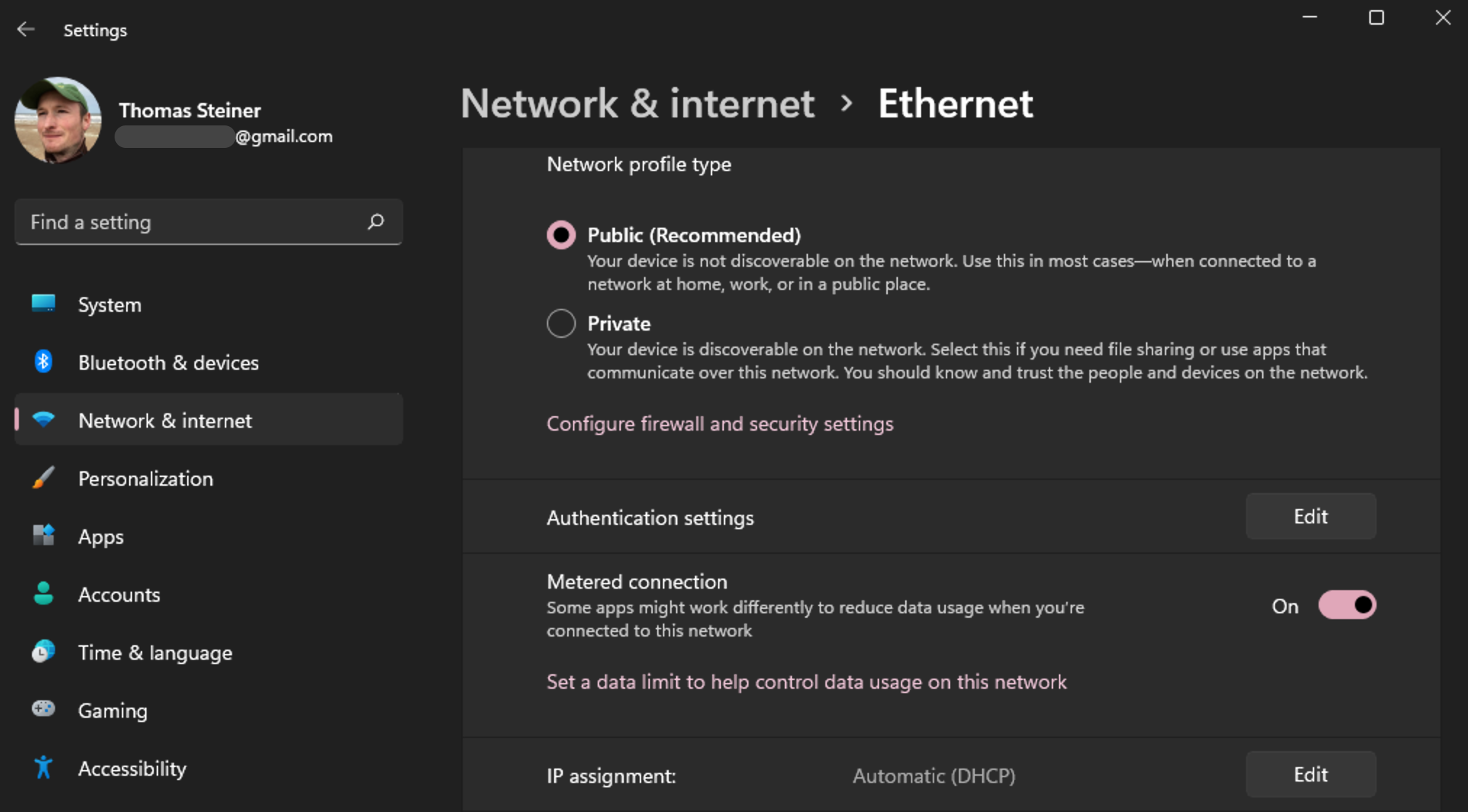
-
Android metered connection:
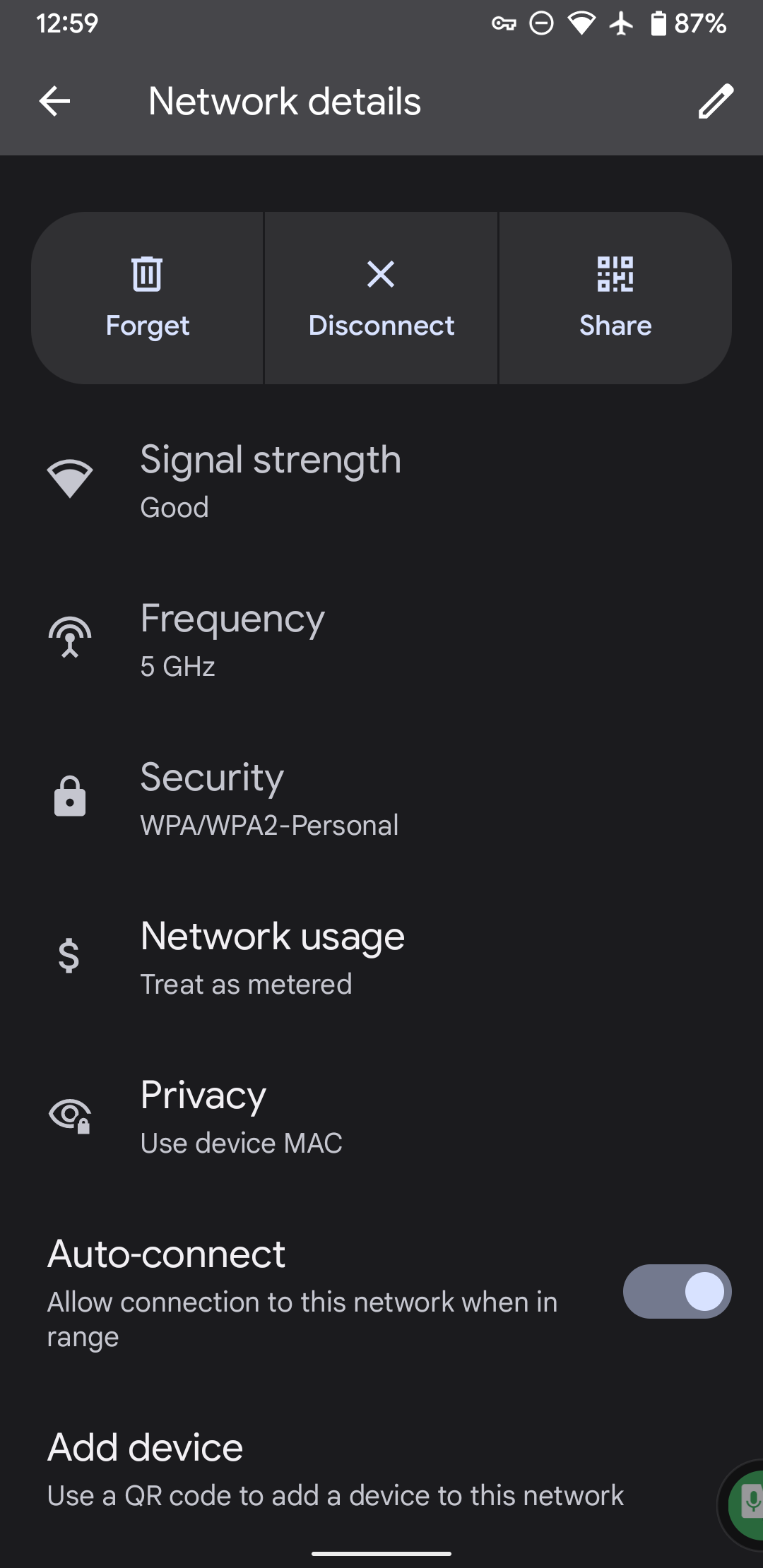
-
iOS/iPadOS Low Data Mode ("You might want to use Low Data Mode if your cellular or internet plan limits your data usage[.]")
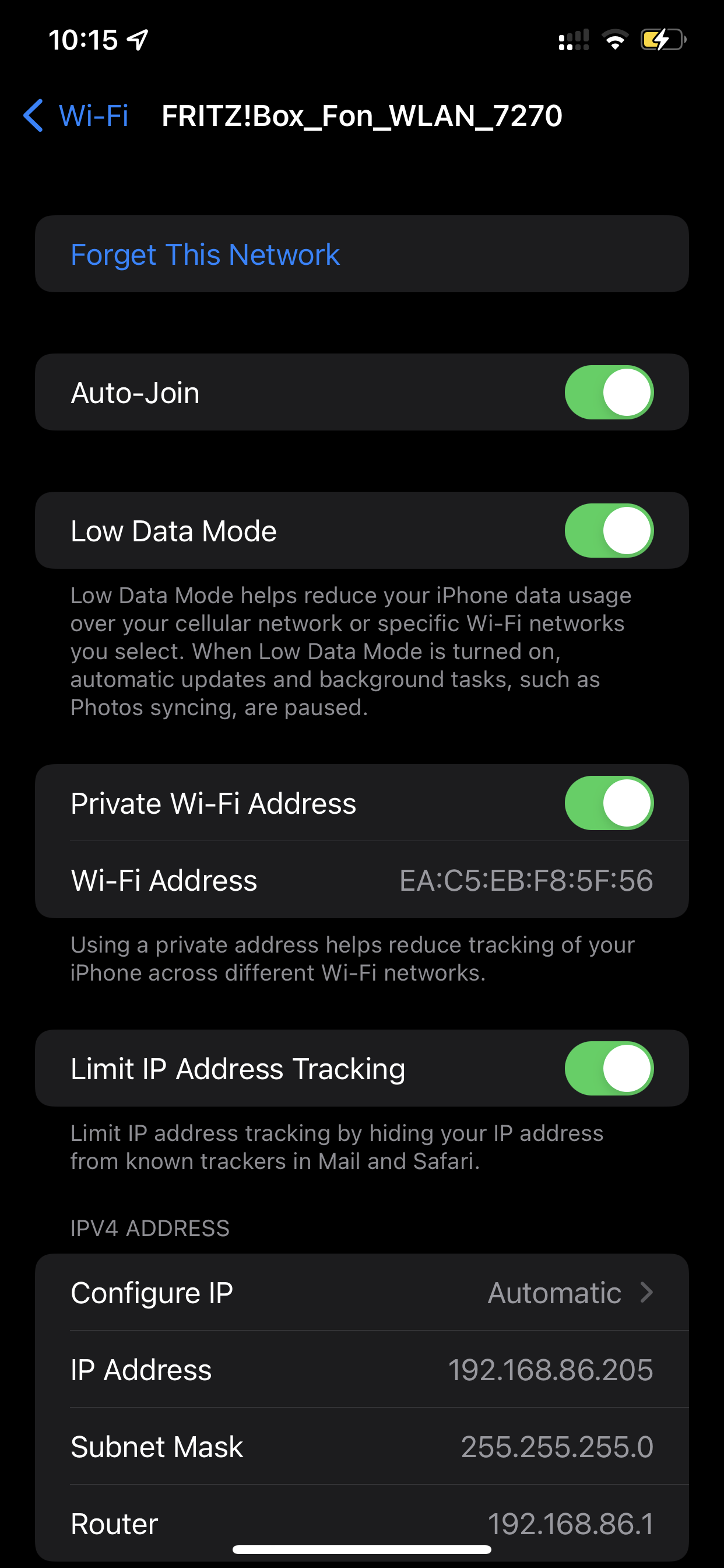
Operating systems like Windows or macOS make realtime network statistics available in their Task
Manager respectively their Activity Monitor apps. On the command line, many operating systems
offer the nettop tool or other means to obtain network
statistics. User agents can, at their own discretion, report these statistics in buckets of
exponentially growing size of bit per second ranges.
-
The Windows Task Manager:
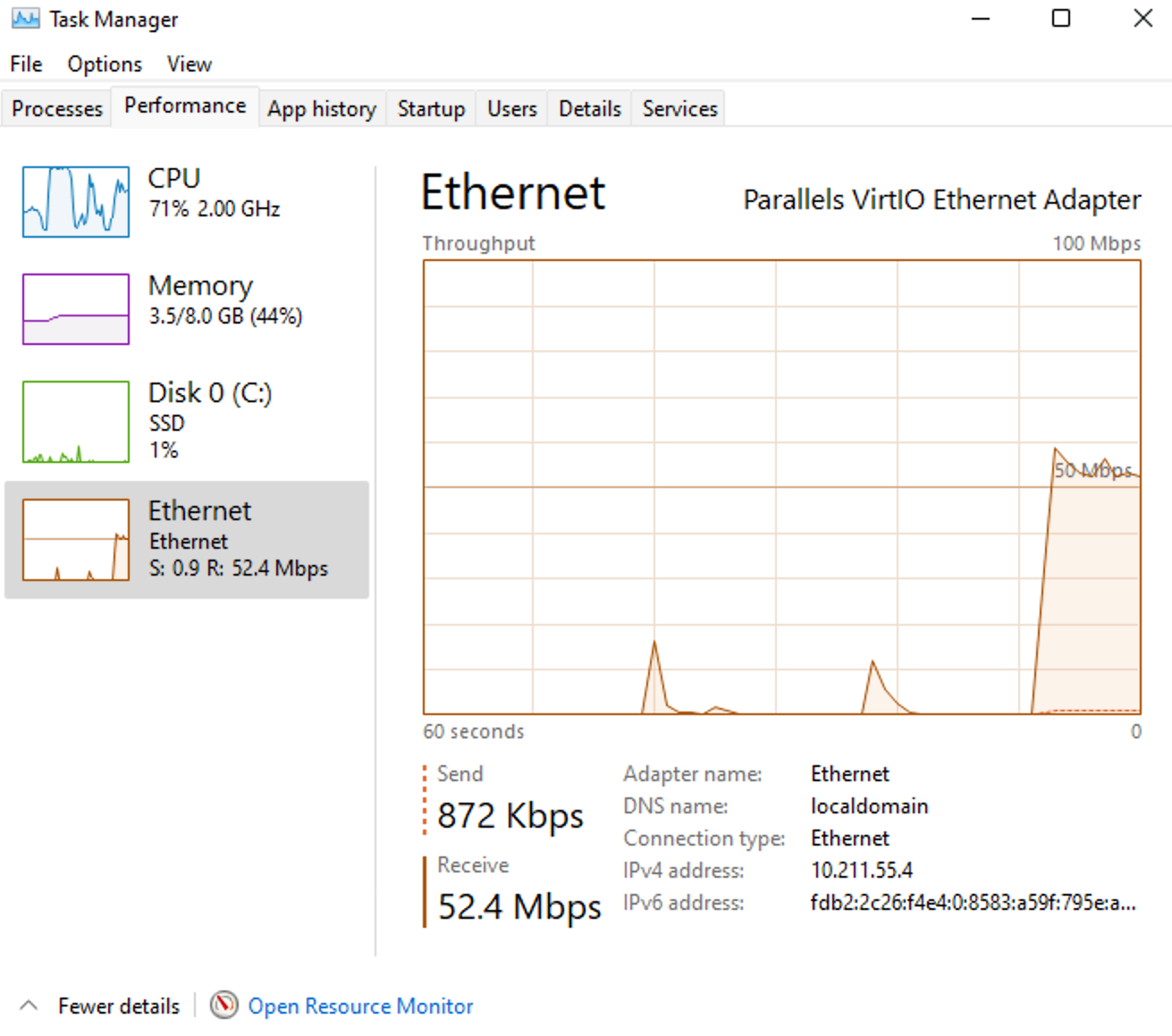
-
The macOS Activity Monitor:
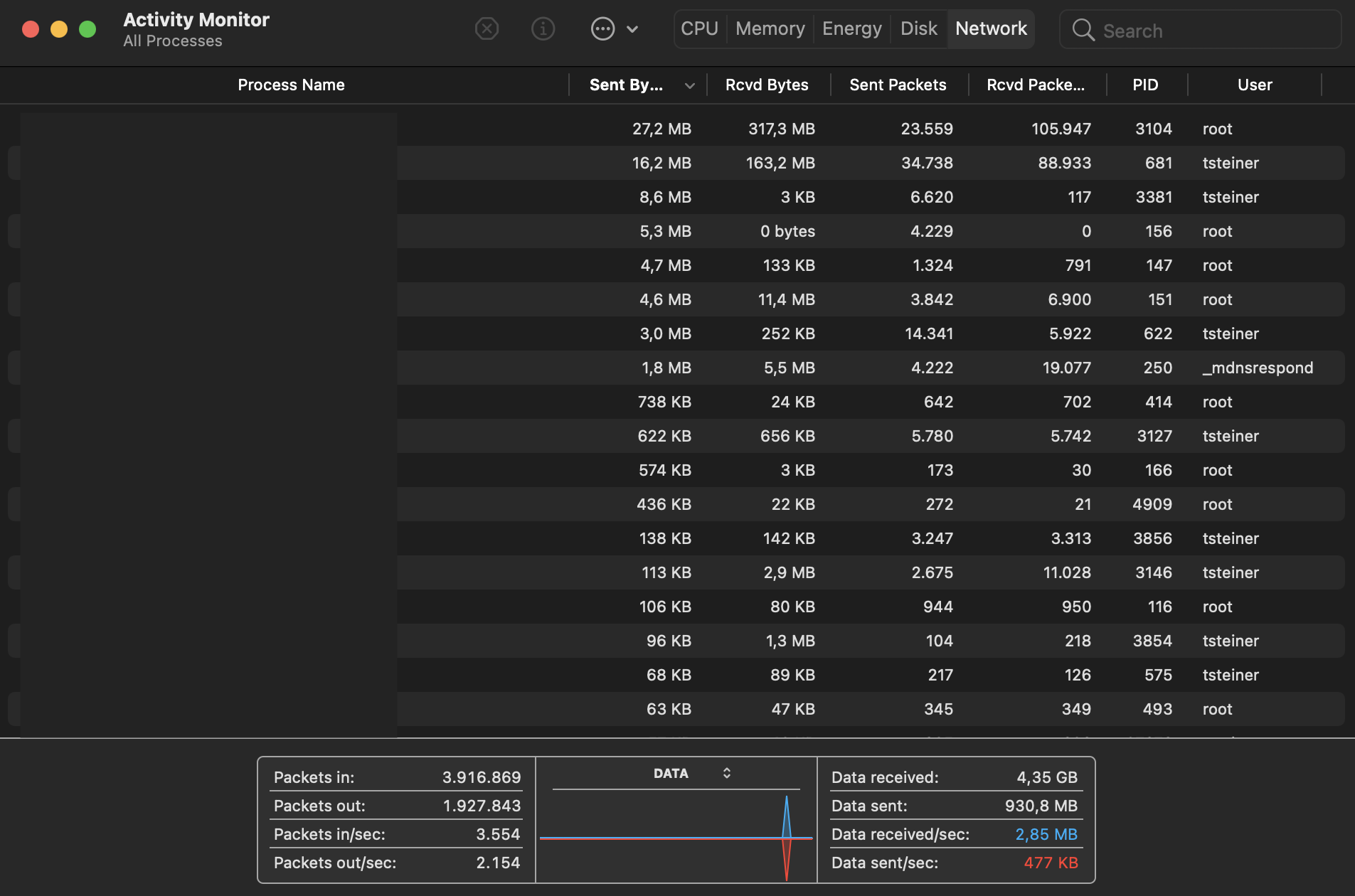
-
The macOS
networkQualitytool:$ networkQuality ==== SUMMARY ==== Upload capacity: 11.102 Mbps Download capacity: 51.989 Mbps Upload flows: 12 Download flows: 12 Responsiveness: High (1666 RPM)
-
The
nettoptool: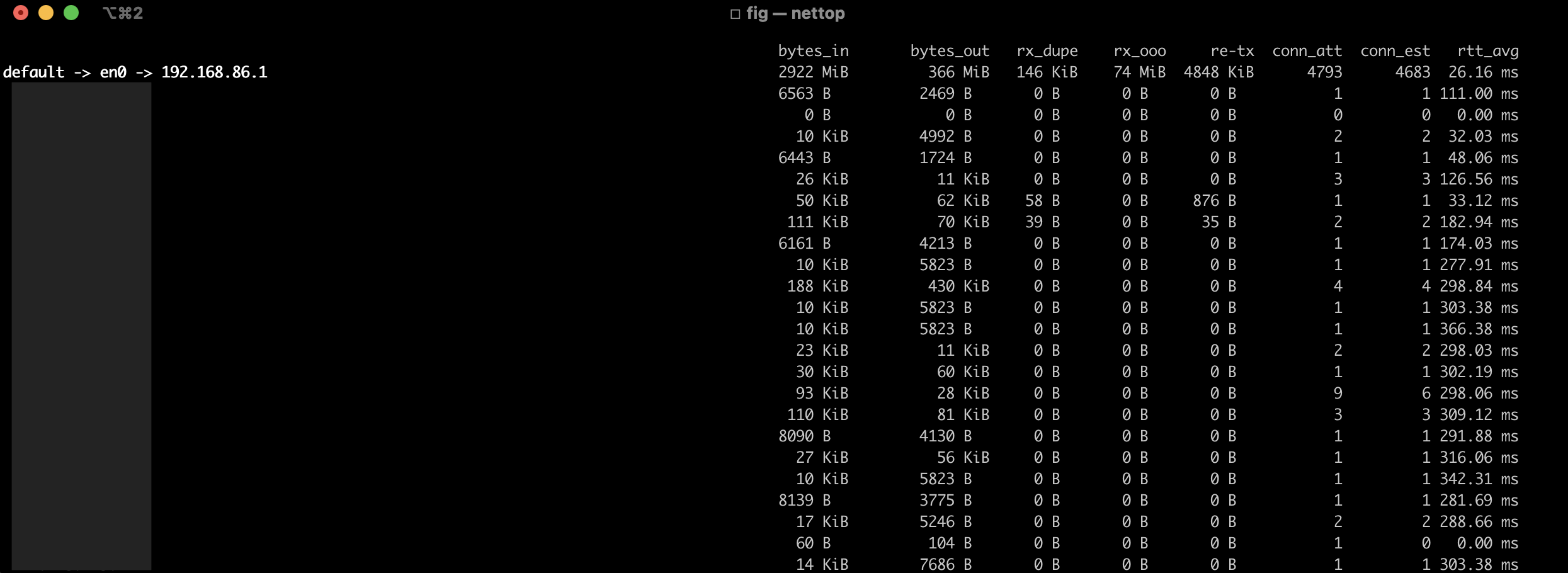
let nonEssentialContentLoaded = false;
async function downloadNonEssentialContent() {
if (nonEssentialContentLoaded) {
return;
}
if (!navigator.connection.metered) {
await fetch('https://example.com/non-essential-content/');
nonEssentialContentLoaded = true;
}
}
if (!navigator.connection.metered) {
downloadNonEssentialContent();
}
navigator.connection.addEventListener('change', downloadNonEssentialContent);const initialSustainedSpeedInBytes = navigator.connection.sustainedSpeed / 8;
// https://github.com/webtorrent/webtorrent/blob/master/docs/api.md#client--new-webtorrentopts
const client = new WebTorrent({
// Max 50% of the available bandwidth.
downLimit = 0.5 * initialSustainedSpeedInBytes,
});
navigator.connection.addEventListener('change', (event) => {
const currentSustainedSpeedInBytes = event.connection.sustainedSpeed / 8;
// https://github.com/webtorrent/webtorrent/blob/master/docs/api.md#clientthrottledownloadrate
client.throttleDownload(0.5 * currentSustainedSpeedInBytes);
});- The client makes an initial request to the server.
GET / HTTP/1.1 Host: example.com
- The server responds, telling the client via
Accept-CHthat it accepts theSec-CH-Metered-Connectionand theSec-CH-Sustained-Speedclient hints, and that it also varies the response on the former, as conveyed byVary.HTTP/1.1 200 OK Content-Type: text/html Accept-CH: Sec-CH-Metered-Connection, Sec-CH-Sustained-Speed Vary: Sec-CH-Metered-Connection
- The client then later makes a follow-up request for
/list-of-products, telling the server viaSec-CH-Metered-Connectionthat it is on a metered connection and viaSec-CH-Sustained-Speedthat its sustained speed is in the bucket of 50,000,000 bps (50 Mbps).GET /list-of-products HTTP/1.1 Host: example.com Sec-CH-Metered-Connection: 1 Sec-CH-Sustained-Speed: 50000000
- The server can then tailor the response to the client's preferences accordingly and, respecting the metered connection, for example, choose to not return all possible products, but just a subset. Since the connection speed permits it, the server can choose to include product videos in the response, but not autoplay them, because the connection is metered.